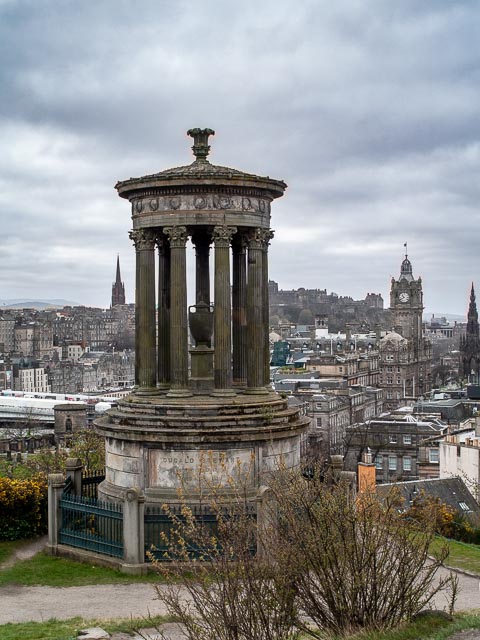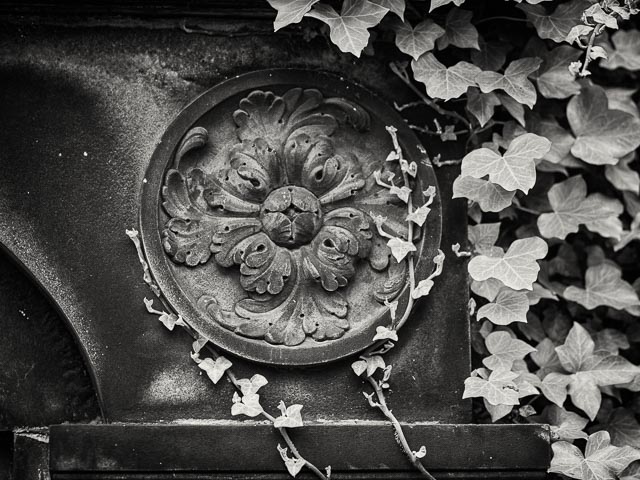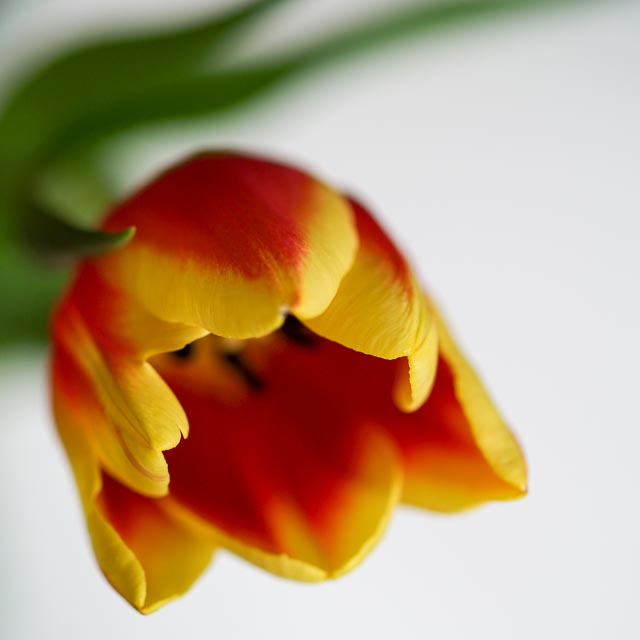Olympus E-500

Introduction to the Four Thirds system
If you just want to see some photographs, skip straight to the results section.
The great majority of the DSLRs from Nikon, Canon, etc., were very clearly based on their preceding 35mm autofocus SLR architectures. This made a lot of sense as it enabled the legions of owners of said 35mm autofocus SLRs to use their existing lenses and accessories with their new (and very expensive!) digital wonders. But Olympus took a very different route…
Of course Olympus didn't have a lot of choice but to take this route, because alone among the photographic big-boys they simply didn't have a successful 35mm autofocus SLR system to base a DSLR on. Olympus only ever launched one fully-integrated 35mm autofocus SLR, the OM707. This camera was an unmitigated distaster for Olympus that saw them withdraw very nearly entirely from the enthusiast and professional 35mm photography market. In fact I suspect that Olympus only barely survived the OM707 debacle at all.
But let's be glad they did survive! Because their lack a fully fledged 35mm autofocus SLR system to base a DSLR on lead them to do something unique in the photography world: they created a completely new digital SLR system developed from scratch around the needs of digital photography: the Four Thirds system. But note that I didn't call it the Olympus Four Thirds system, because this system was jointly developed by Olympus, Panasonic and Kodak (and, to a lesser extent, Fujifilm, Leica, Sanyo and Sigma) and was intended to be a sort of open standard that any company could sign up to and produce cameras, lenses or accessories for, rather than a proprietary system that one company controlled.
The ideal of an open system with multiple companies producing cameras and lenses was only partially successfully, and it seems only Olympus was fully committed. Olympus produced a total of 15 DSLR cameras, while Panasonic produced 2 and Leica just 1. The Four Thirds system was in production between 2003 and 2013, but it was already in a state of terminal decline when Olympus and Panasonic launched the Mirco Four Thirds system in 2009. But in that time Olympus introduced a number of new technologies, including the first interchangeable lens camera with a dust reduction system, and the first interchangeable lens camera with live view.
Introduction to the Olympus E-500
| Launch date | September 2005 |
|---|---|
| Camera type | Digital SLR |
| Camera size | 479 grams 130 x 95 x 66 mm (inc. battery) |
| Sensor type | CCD (Kodak Full Frame Transfer) |
| Sensor size | Four thirds (17.3 x 13.0 mm) |
| Resolution | 3264 x 2448 (8 megapixels) |
| Memory card | Compact Flash (Type I or II) and xD Picture Card |
| Battery | BLM-1 (or CR123A x 3 with option LBH-1 battery holder) |
| Lens | Interchangeable - Four Thirds mount |
The Olympus E-500 was introduced in September 2005 as the third Four Thirds system camera. The first was the high-end, 5 megapixel, E-1, launched in June 2003, and the second was the consumer 8 megapixel E-300, launched in September 2004. The E-300 had a curious "porroprism" SLR viewfinder (similar to the Olympus Pen F series in the 1960s) which gave it an unusual flat top design. But the E-300's porroprism viewfinder was met with some resistence in the market place and so exactly 1 year later the E-500 was launched with an almost identical similar specification (including the same Kodak FFT CCD 8 megapixel sensor) except the porroprism viewfinder was replaced with a much more conventional "penta-mirror" viewfinder as was common on most low-end DSLRs.
The E-500 met with a much better responce from both camera reviewers and the market place. It's a fairly typical low-to-middle-end DSLR from the early-to-mid 2000s and was competitive, for the most part, with similar cameras from Canon, Nikon et al. One area in which it was perhaps a little behind the competition was the auto-focus system with a mere 3 focus points (most competitors had 5-7 focus points). One of the features that allowed the E-500 to really differentiate itself from the competition was what Olympus called the "Supersonic Wave Filter" (usually referred to as SSWF) which essentially shook dust of the sensor which then stuck to a membrane located just below it. It operates every time you switch the camera off or on.
The user interface of the E-500 is pretty typical of similar consumer level DSLRs from its competitors, so there is no status LCD on the top plate (with settings being shown on the LCD monitor on the back of the camera), just one command dial and a selection of buttons for pretty much everything you need for day-to-day photography that you press and then select the required setting with the command dial. The E-500 has a fairly substantial grip and a built-in flash hidden in the penta-mirror hump on top of the camera.
+ Specification
Product type |
|
|---|---|
| Product type | Single-lens reflex digital camera with interchangeable lens |
| Lens | Zuiko Digital, Four Thirds System Lens |
| Lens mount system | Four Thirds mount |
| Equivalent focal length on a 35 mm film camera | Approx. twice the focal length of the lens |
Image pickup element |
|
| Product type | 4/3 type full frame transfer primary color CCD |
| Total no. of pixels | Approx. 8,880,000 pixels |
| No. of effective pixels | Approx. 8,000,000 pixels |
| Screen size | 17.3 mm (H) x 13.0 mm (V) (0.9" x 0.5") |
| Aspect ratio | 1.33 (4:3) |
Viewfinder |
|
| Product type | Eye-level single-lens reflex viewfinder |
| Field of view | Approx. 95% (for field of view on recorded images) |
| Viewfinder magnification | Approx. 0.9x (-1 m-1, 50mm lens, infinity) |
| Eye point | 10 mm (0.8") (-1 m-1) |
| Diopter adjustment range | -3.0 - +1.0 m -1 m-1 |
| Optical path fraction | Quick return half mirror |
| Depth of field | Can be checked with the V (one-touch WB) button (when PREVIEW registered) |
| Focusing screen | Fixed |
| Eyecup | Interchangeable |
Monitor |
|
| Product type | Approx. 215,000 pixels |
| Total no. of pixels | 2.5" TFT color LCD (Hyper crystal LCD) |
Shutter |
|
| Product type Shutter | Computerized focal-plane shutter |
| Shutter | 1/4000 - 60 sec Manual mode: Bulb (Limit: 8 min.) |
Auto focus |
|
| Product type | TTL phase-contrast detection system |
| Focusing point | 3-point multiple AF (left, center, right) |
| AF luminance range | EV 0 - EV 19 |
| Selection of focusing point | Auto, Optional |
| AF illuminator | The built-in flash provides light. (light can also be provided by an external electronic flash.) |
Exposure control |
|
| Metering system | TTL full-aperture metering system (1) Digital ESP metering (49-segment multi pattern metering) (2) Center weighted average metering (49-segment multi pattern metering) (3) Spot metering (approx. 2% for the viewfinder screen) |
| Metering range | (1) EV 1 - 20 (Digital ESP metering, Center weighted average metering) (2) EV 3 - 17 (Spot metering) (At normal temperature, 50 mm F2, ISO 100) |
| Exposure mode ISO sensitivity | (1) AUTO: Full auto (2) P: Program AE(Program shift can be performed) (3) A: Aperture priority AE (4) S: Shutter priority AE (5) M: Manual |
| ISO sensitivity | 100 - 400 (High ISO values (800 - 1600) are available) |
| Exposure compensation | Exposure can be adjusted in 1/3, 1/2 or 1 EV step within a range of ± 5 EV. |
White balance |
|
| Product type | CCD |
| Mode setting | Auto, Preset WB (7 settings), Customized WB, One-touch WB |
Recording |
|
| Memory | CF card (Compatible with Type I and II) Microdrive (Compatible with FAT 32) xD-Picture Card |
| Recording system | Digital recording, TIFF (non-compression), JPEG (in accordance with Design rule for Camera File system (DCF)), RAW Data |
| Applicable standards | Exif 2.2, Digital Print Order Format (DPOF), PRINT Image Matching III, PictBridge |
Playback |
|
| Playback mode | Single-frame playback, Close-up playback, Index display, Image rotation, Slideshow, Light box display, Calendar display |
| Information display | Information display, Histogram display |
Drive |
|
| Drive mode | Single-frame shooting, Sequential shooting, Self-timer, Remote control |
| Sequential shooting | 2.5 frames/sec. (Max. no. of storable sequential pictures: 4 frames in RAW/TIFF) |
| Self-timer | Operation time: 12 sec., 2 sec. |
| Optical remote control | Operation time: 2 sec., 0 sec. (instantaneous shooting) (RM-1 Remote Control (optional)) |
Flash |
|
| Synchronization | Synchronized with the camera at 1/180 sec. or less |
| Flash control mode | TTL-AUTO (TTL pre-flash mode), AUTO, MANUAL |
| External flash attachment | Hot shoe |
External connector |
|
| External connector | USB connector/Multi-connector |
Power supply |
|
| Battery | BLM-1 Li-ion Battery x1/CR123A lithium battery x3 (for use with LBH-1 Lithium Battery Holder) |
Dimensions/weight |
|
| Dimensions | 129.5 mm (W) x 94.5 mm (H) x 66 mm (D) (5.1" x 3.7" x 2.6") (excluding protrusions) |
| Weight | Approx.435 g (1.0 Ib.) (without battery) |
Operating environment |
|
| Temperature | 0 - 40°C (32°F - 104°F) (operation)/-20 - 60°C (-4°F - 140°F) (storage) |
| Humidity | 30 - 90 % (operation)/10 - 90 % (storage) |
Using an Olympus E-500 in 2025
For the most part I found the E-500 a pleasure to use. It's very light-weight and compact (more so than the preceding E-300), yet has a very comfortable grip. But having said that, I found the command dial could sometimes be a little uncomfortable to use: its positioned to be operated by the right thumb, and is a bit of a problem when you want to use it together with a button that is also positioned for the right thumb, especially with your eye to the viewfinder. I found this happened most when trying to set the focus point (even though there are only be 3 of 'em!).
 The layout of viewfinder information is also a little unusual, with all the information presented in a vertical column to the right of the viewfinder. This is really just a matter of re-training my muscle-memory (that always sends my eye to the bottom of the viewfinder for shutter speeds, apertures, etc.) but never-the-less I found this a bit strange.
The layout of viewfinder information is also a little unusual, with all the information presented in a vertical column to the right of the viewfinder. This is really just a matter of re-training my muscle-memory (that always sends my eye to the bottom of the viewfinder for shutter speeds, apertures, etc.) but never-the-less I found this a bit strange.
The E-500 uses compact flash memory cards which, while no-longer seen on current cameras, are still plentiful and cheap. I tried my E-500 with 1mb, 2mb and 4mb cards and they all worked flawlessly.
Although Four Thirds lenses are not particularly small or light-weight compared to modern mirrorless lenses, they're still small compared to most contemporary DSLR lenses. Never having owned a Four Thirds camera before I didn't have any suitable lenses in my gear cupboard, so I bought the pleasant and compact (but entirely forgettable!) 14-42mm f/3.5-5.6 "kit" zoom (which weighs in at 190 grams), and a rather more interesting 50mm f/2 macro lens (which weighs in at 300 grams). The kit zoom is perhaps the more useful general purpose lens, but when I was looking though my test photographs for inclusion in this article I was a bit surprised to find I had use the 50mm macro far more than the 14-42mm zoom. But both lenses suit the E-500 admirably.
So all-round I found the E-500 a very pleasant camera to use with only occasional problems trying to operate the focus point selection button and the command dial at the same time with my thumb spoiling the handling.
Buying an Olympus E-500 in 2025
So here we come to one of the downsides to buying and using a Four Thirds camera in 2025: the cost. Compared to many vintage DSLRs competing for your retro-tech dollar, all Four Thirds cameras tend to be expensive, and the more exotic examples especially so. I think this is due in part to the fact that as the Four Thirds system was only around the 10 years or so it already has an air exclusivity and rarity. Strangely enough one of the Four Thirds cameras that seems to have caught the attention of TikTokkers and YouTubers is the relatively low-end and prosaic E-300. Maybe that porroprism viewfinder makes it look so unusual, which peaks the interest of retro-tech fans. But I'm sure that Kodak Full Frame Transfer CCD sensor play its part too.
Amongst retro-digital camera lovers there is an ever-growing subset who will eulogise endless about CCD sensors, and amongst that CCD loving subset there is smaller, but an even more passionate, subset that loves Kodak CCD sensors in particular. And you know what, within that subset, there are those that think the Kodak Full Frame Transfer CCD sensor is the ultimate "film-like" sensor.
Even though the E-300 was a fairly low-to-mid-range camera when it was launched, you often see it selling for upwards of £100, even though similar cameras from other manufacturers will often sell for half that. And that is in addition to fact that Four thirds lenses also often sell for top-dollar. But the E-500 seems to (so far at least) have escaped the attention of the slavering masses on social media. I paid £45 for my E-500 in fine condition from a reputable retailer with a 5 year guarantee (CeX in case you're wondering). From the same retailer, E-300s in similar condition will set you back £80+! Remember that the only real difference between the two cameras is the more conventional viewfinder on the E-500.
So if you want to test out a Kodak FFT CCD sensor camera yourself without breaking the bank skip the E-300 and go for the E-500. I completed my Four Thirds outfit with a Olympus Zuiko Digital ED 14-42mm f/3.5-5.6 for £32 and a Olympus Zuiko Digital ED 50mm f/2.0 Macro for £110, all from the same retailer.
Oh and one final thing, the SSWF dust reduction system really does work! One thing I've found from using 4 different vintage DSLRs over the last few weeks is that no matter how nice the condition of the camera is when it arrives, the sensor will always be in desparate need of a good clean… except the E-500! It was clean as a whistle. Well done Olympus!
Olympus E-500 results
I tend to find descriptions of any digital camera from the mid 2000s as "film-like" to be, if I'm going to be frank, pretty silly. Look back at contemporary reviews of camera from this era and you'll never see them described in such terms (in fact, if anything, you're more like to see this term being used about cameras with CMOS sensors!). Using the E-500 hasn't changed my mind about this, but you know what? I might recoil in horror at the modern use of the term "film-like" to describe these digital cameras, but I do think they produce results that are subtly, but genuinely, different from modern digital cameras, and that difference is definitely worth celebrating and exploring.
To what extent that difference is really about the specifics of the sensor technology, or whether its really about the different approaches the various manufacturers have to colour science is very difficult to pin down, but I have to admit, when I saw the results from the E-500 I really did love them more than any other vintage DSLR I have tried so far.
When it comes to the lenses I bought to go with my E-500, I found the 14-42mm kit lens to be pleasant but forgettable. (The two images below from that lens are only here because I thought I should include at least a couple!) But I found the 50mm f/2.0 Macro to be very addictive. I found myself using it far more than I have ever used any other 100mm equivalent lens! It really does deserve it's reputation as one of the most desirable lenses in the Four thirds systems.
But at the end of the day I'll leave it to you to decide. (As usual the colour images below have been lightly edited to taste using Adobe Lightroom Classic. The b&w images were process using Silver Efex Pro 2.0.)

Olympus Zuiko Digital 14-42mm f/3.5-5.6 (28mm - f/5.0 - 1/200 - ISO100)

Olympus Zuiko Digital 14-42mm f/3.5-5.6 (35mm - f/5.3 - 1/320 - ISO100)

Olympus Zuiko Digital 50mm f/2.0 Macro (f/2.0 - 1/640- ISO100)

Olympus Zuiko Digital 50mm f/2.0 Macro (f/2.0 - 1/250 - ISO100)

Olympus Zuiko Digital 50mm f/2.0 Macro (f/2.0 - 1/320 - ISO100)

Olympus Zuiko Digital 50mm f/2.0 Macro (f/2.0 - 1/200 - ISO100)

Olympus Zuiko Digital 50mm f/2.0 Macro (f/2.0 - 1/200 - ISO100)

Olympus Zuiko Digital 50mm f/2.0 Macro (f/2.0 - 1/60 - ISO100)

Olympus Zuiko Digital 50mm f/2.0 Macro (f/2.0 - 1/400 - ISO100)

Olympus Zuiko Digital 50mm f/2.0 Macro (f/2.0 - 1/125 - ISO100)

Olympus Zuiko Digital 50mm f/2.0 Macro (f/2.0 - 1/60 - ISO800)

Olympus Zuiko Digital 50mm f/2.0 Macro (f/2.0 - 1/50 - ISO100)

Olympus Zuiko Digital 50mm f/2.0 Macro (f/2.0 - 1/25 - ISO100)

Olympus Zuiko Digital 50mm f/2.0 Macro (f/2.0 - 1/60 - ISO100)

Olympus Zuiko Digital 50mm f/2.0 Macro (f/2.0 - 1/100 - ISO100)

Olympus Zuiko Digital 50mm f/2.0 Macro (f/2.0 - 1/60 - ISO100

Olympus Zuiko Digital 50mm f/2.0 Macro (f/2.0 - 1/13 - ISO100)

Olympus Zuiko Digital 50mm f/2.0 Macro (f/2.0 - 1/40 - ISO100)

